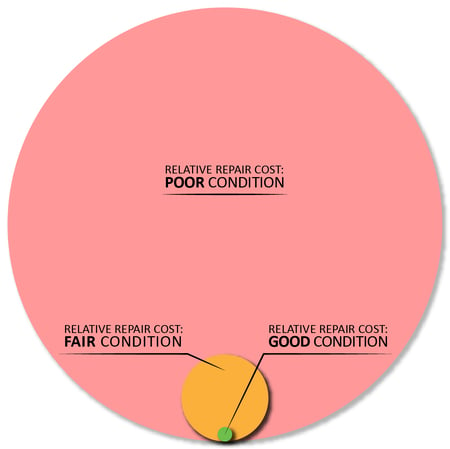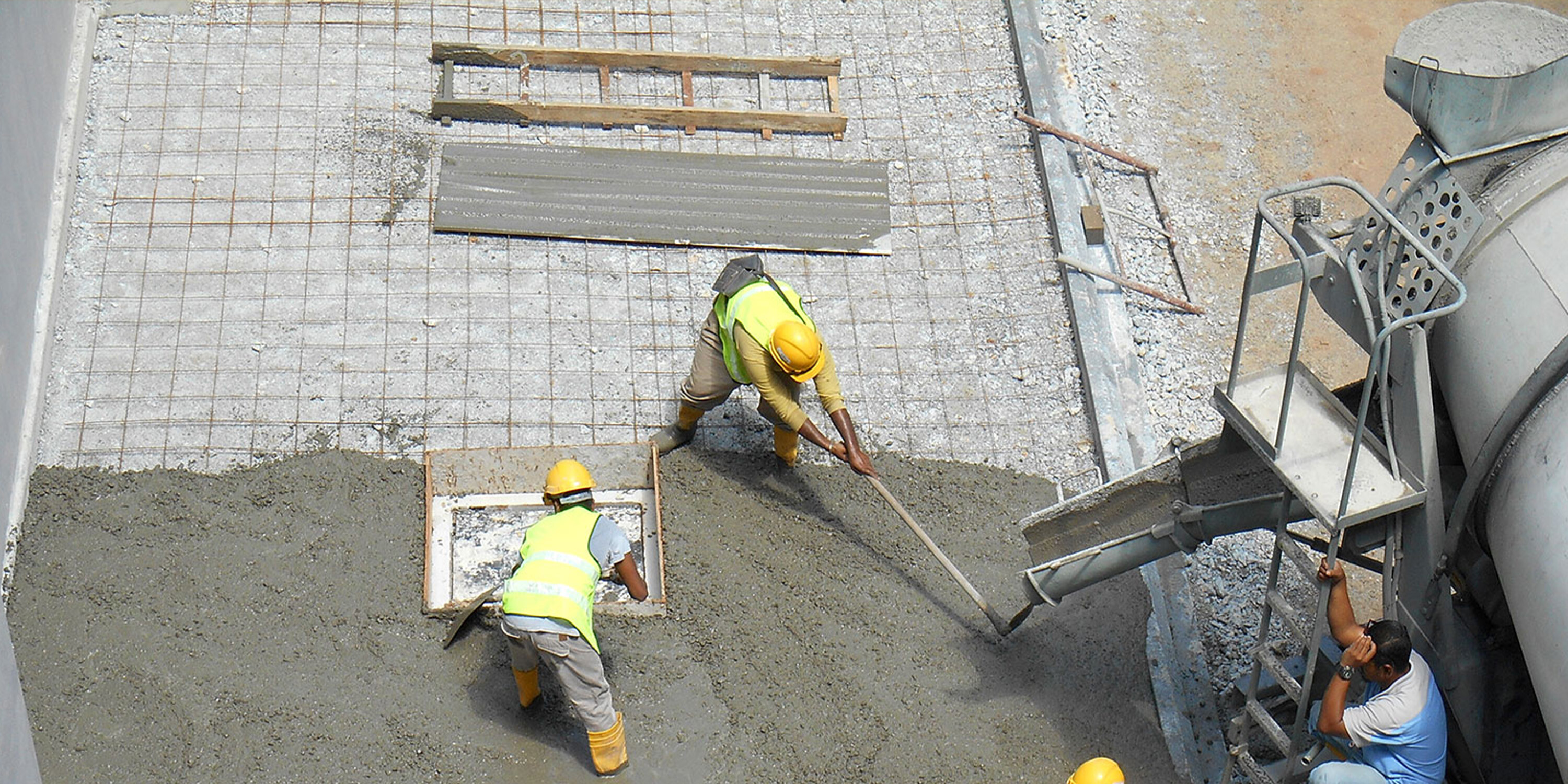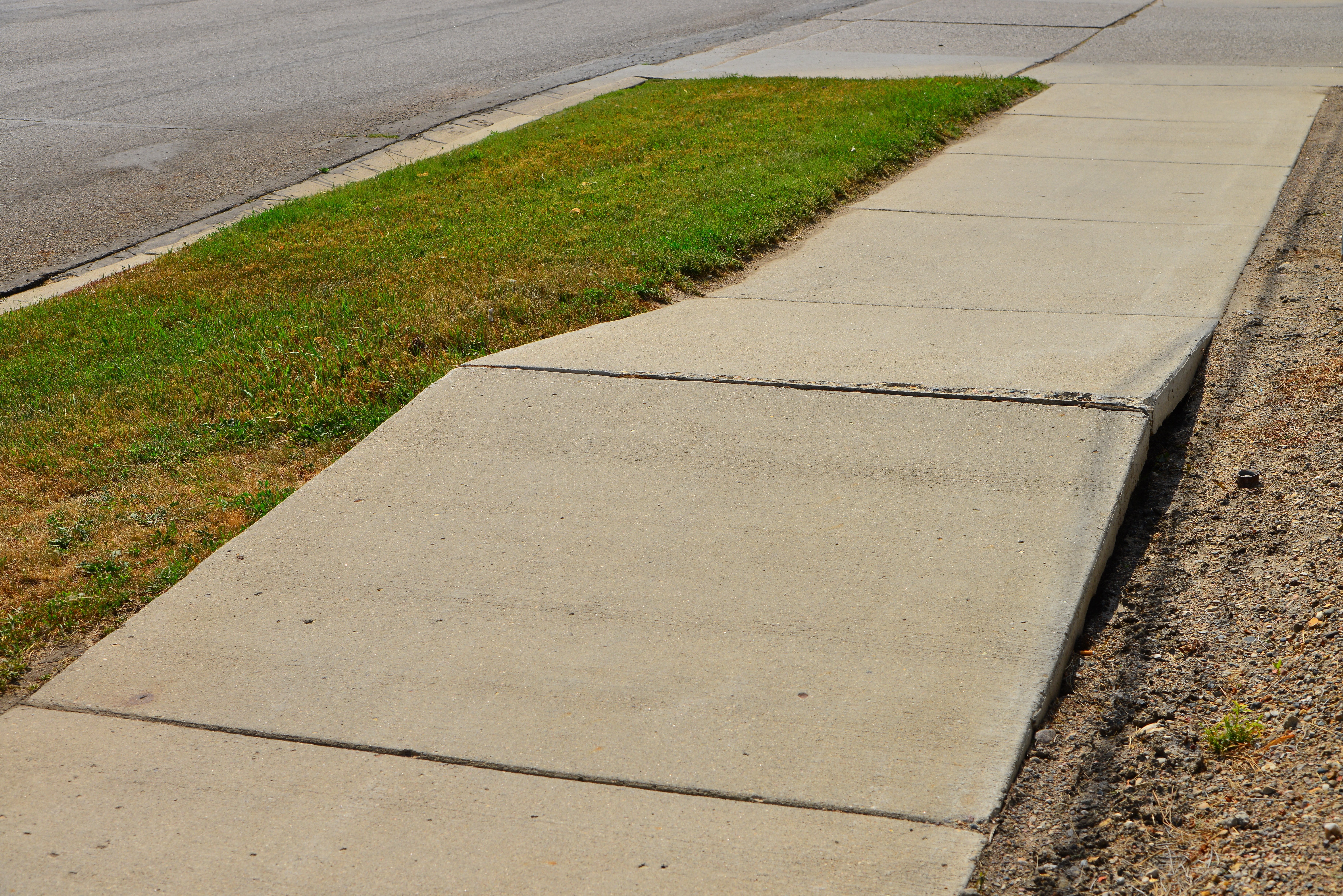Program Management | May 24, 2021
Caring for Parking Lots During Freeze-Thaw Conditions
In North America, the advent of spring brings change in the form of more sun, less snow, and maybe the chance to put on a pair of shorts occasionally.
This change can be far less welcoming as far as your pavement assets are concerned.
Temperature fluctuations lead to the formation of cracks in asphalt and concrete. When water freezes, it expands in volume by up to nine percent, forming small cracks in the pavement.
When cracks form, sand and gravel make its way inside of the cracks and enlarge the space. This presents a problem, as the sand and gravel prevent asphalt or concrete from being able to return to its original form after ice melts. Each time there is a freeze-thaw cycle, the cracks invite more and more debris. This widens the gaps even further. Over time, the formation and growth of cracks destroy pavement altogether.

Regions with higher annual precipitation experience this cycle of damage at a higher rate. However, any area where the temperature drops below freezing is susceptible to these impacts of freeze-thaw cycles.
How Does This Affect My Budget?
You can help prevent sand and gravel from clogging up and expanding cracks at a modest cost. Sealing minor cracks costs approximately $1 per linear foot, depending on your local market.
Regular maintenance of a surface in “good” condition is relatively inexpensive.
Yet, failing to be proactive increases the costs of pavement maintenance. The repair of the surface will cost three to six times more if facility staff fails to seal and protect minor cracks when the surface deteriorates down to a “fair” condition.
As the surface deteriorates down to a “poor” condition, the cost of repair is up to 30 times more than preventive maintenance would have cost.

What Is a Facility Manager to Do?
“If you keep your pavement in good condition, the most you’re doing is a mill and overlay,” says Jamie Johnson, Pavement Program Manager of Mantis. “Any staff with a keen eye should be able to perform a basic visual survey after severe freeze-thaw events, especially in the springtime.”
Fortunately, asphalt heaters, routers, sealants, and seal coatings are reasonably low-cost. With a little training, regular pavement maintenance is a task that in-house staff can perform.
A standard maintenance schedule for new asphalt concrete should look like:
Every 1-2 Years: Crack repair and minor preventative maintenance
Every 3-4 Years: Crack repair, preventative maintenance, and seal coat
Every 10-15 Years: Two-inch mill and overlay
This schedule will vary depending on soil conditions, weather, regionality, original design parameters, loadings, and when unforeseen events cause damage directly to the pavement.
When to Call a Pavement Consultant Like Mantis
While maintenance staff can survey for new cracks and perform basic repair, some tasks warrant calling a pavement professional.
If you have new or recently replaced pavement – A facilities management consultant specialized in pavement can create a detailed plan. The plan will cover upkeep and repair of your pavement assets, based on local weather and soil conditions as well as using historical data to maximize a facility manager’s repair budget. A consultant also understands the best types of sealant and seal coating for the local climate, ensuring money is not wasted on ineffective repair materials.
To get a detailed assessment of existing conditions – Your maintenance staff can perform a basic visual survey of pavement for cracks. A licensed civil engineer can take it a few steps further. They will provide an accurate, detailed report on the current state of a surface and make recommendations for ongoing repair, considering loadings, soil conditions, and other unseen factors.
If staff is new or untrained – In-house staff might not have the time or knowledge to sufficiently clean out incompressibles or old sealant from cracks. Thereby, it reduces the benefits of preventive maintenance. If your staff is inexperienced in asphalt repair or new to the facility, call a professional and make sure you get the work done correctly.
If it looks bad but you’re not sure how bad – You may not know whether your pavement is in “good” or “fair” condition just by looking at it. Maybe optimism is making “poor” pavement look a little bit better than it is considering a limited budget. Follow your instincts and call a professional if you think you may be in trouble.
Do you have a problem with your pavement right now? Or are you in the dark about the longevity of your pavement assets and how it will affect your budget? Contact us today to see how we can help safeguard your assets and minimize your long-term capital expenditure.
Related Posts
Discover more content and insights from Mantis Innovation

Modernizing Manufacturing Facilities: Practical Steps for Better Performance
In today's competitive manufacturing landscape, staying ahead requires more than maintaining the status quo. Modernizing facilities and operations is essential for improving efficiency, performance,

How Your Pavement Can Reduce Trip, Fall, & Slip Claims
This is the third and final installment in a series of pavement-related pieces that can keep Facilities Management on top of seasonal concerns with asphalt and concrete. While building owners and

Concrete Curing 101: Understanding a Critical Step in Your Pavement Projects
This is the second in a series of pavement-related pieces that can keep Facilities Management on top of seasonal concerns with asphalt and concrete. While building owners and operators are

The Heat is On: Strategies for Concrete Pavement Longevity Amid Extreme Weather
This is the first in a series of pavement-related pieces that can keep Facilities Management on top of seasonal concerns with asphalt and concrete. For many building owners and operators, pavement